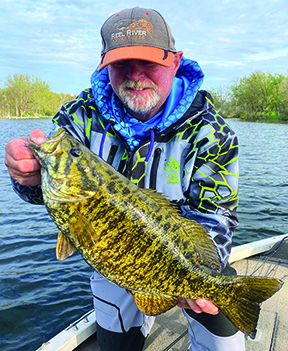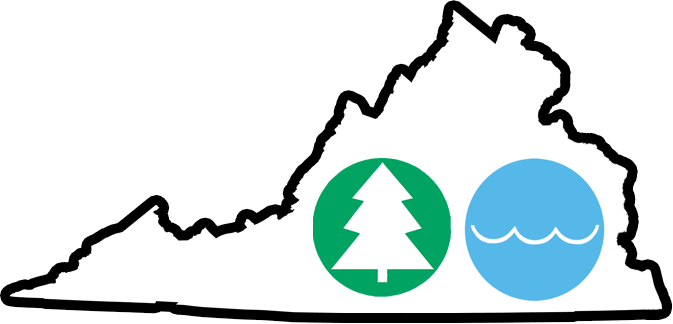For no less than 40 years, few topics on smallmouth bass fishing have been more polarizing than asking anglers to list their top lures or what color tube is best? These topics have haunted forums, chatrooms and social media for as long as we have had them. One of the most polarizing topics is the spawn.
As we enter the month of May, the annual discussions on spawn and spawning take the lead. You can bet there will be strong opinions and perhaps for good reason. The when, how, where and what to and not to do is just the beginning. While there are many misconceptions about the spawn, most anglers understand enough of the process to make their own conclusions.
Here is my take from decades of fishing rivers and lakes across the eastern United States.
Experience is NOT a PhD in fisheries management, but having spent time with fisheries managers from three different states and witnessing this seasonal event every year since the early 80’s, I have learned a thing or two and had my ‘opinions’ challenged and given pause to other considerations.
Here on the Susquehanna, many are hypersensitive to how easily affected the fishery is to poor spawn years and disease. In the early 2000’s this fishery took a disastrous hit. Anglers started to notice the lack of small bass around 2002, and many of us reached out to the Fish Commission. Our pleas went unheard for nearly six years until creel studies started to support what anglers had been saying all along.
The PFBC started hosting Smallmouth Symposiums and having attended all three, I can tell you firsthand how passionate anglers from DE, MD, NJ, NY, PA, VA and WVA are about this fishery. Biologists and fisheries managers were brought in from VA, MD and NY. Regulations were changed and the rest as they say, is history. Today we have one of the top river smallmouth fisheries in the country.
So back to the topic of spawning smallmouth. This annual occurrence usually happens in April and can carry into May. Many anglers believe water temperatures in the 50’s are critical, but from what I have witnessed firsthand, moon phases and length of daylight will trump water temperature every time. When the females are ready to burst, they are not waiting for temps in the 50’s. Just my observation from fishing a very shallow river since my early youth.
A second observation is that not all bass will spawn at the same time. I have noticed that it is generally done in three specific groups with the oldest, most mature females going first. This is followed 1-2 weeks later with the largest spawning group. This is what most anglers witness and since it is such a large group of smallmouth, it adds to some confusion from anglers who believe there is only one major spawn. The third and final group to go are the youngest females of a spawning year. Keep in mind that this may be specific to river smallmouth and perhaps even to a limited number of rivers. Nature has a way of protecting generations and by going in stages instead of all at once, there is simply less risk to a spawning year class.
Another area of disagreement is whether to fish during the spawn or fish over bedding areas when the males are protecting fry.
Simply put, our state has very clear regulations about targeting and repeatedly casting into known bedding areas. In Pennsylvania it is cut and dry. Or is it? I have sat through many seminars where guides and pro tournament anglers will share the ‘how to’ for fishing spawning bass. It is mind blowing. My suggestion is to follow the regs.
Can anglers fish during the spawn? Yes, they can. Will some inadvertently catch bass in some phase of the spawn, most certainly, yes. The fact that bass will feed right up to the mating process is what makes it so challenging to limit targeting spawning fish. So how can anglers avoid targeting? In a river it is simple, bass will build nests and spawn in very specific areas. Calm pools, protected eddys and creeks. If anglers are targeting current seams, fast water or rocky areas, they will be eliminating 90% of the water fish spawn in. If anglers are repeatedly casting in protected areas and catching bass after bass for hours without moving, we all know what is going on. Police yourself, make a few casts and move out into the current.
My staunch views on angler impact on the spawn were challenged about a dozen years ago when on a video shoot in New Hampshire. A small group of us were met by a contingent of the NH Fish & Game Department and given complimentary fishing licenses, a facilities tour and were hosted to a day’s fishing with their fisheries manager.
To our surprise, one of the first spots we stopped at to fish was a clear spawning area. You could see large round nests and mating pairs doing their annual ritual. “Throw there,” our host pointed to one such spot. We just sat there like deer in a headlamp. Our cameraman even looked on with amazement. “No offense” we shared, “but we are not going to actively fish spawning bass.”
The manager smiled and pointed to groups of loons and cormorants in the area we were in. He went on to share that being here and fishing was actually keeping the predatory birds from dining on adult bass who were otherwise unprotected. He went on, that loon can swallow a 15” bass whole, and so can those cormorants. They are amazing swimmers and our presence is keeping them out of this area.
We politely declined to fish over beds and he took us to a few other spots where we could fish open water away from bedding areas. While his reasoning was compelling, we couldn’t wrap our heads around it. The rest of our stay was spent on other bodies of water where active beds were either nonexistent or abandoned. To this day, my views on not repeatedly targeting beds have been unchanged. I believe there are enough bass outside these areas to catch. I do however notice groups of cormorants patrolling spawning grounds and wonder who does more harm, the birds or anglers?
My take, let those big females do their thing. They will be off the beds in a day or two and will soon be feeding in current and on other ambush points. Leave those 12-15” males alone to protect their fry. Catching some is inevitable as 1one to two nests can exist in areas that are not large community breeding areas. Focus on the swift water seams close by and come back to these other areas later in the month. Oddly, bass will feed on smallmouth YOY (Young Of Year) just weeks after they leave the beds, but at least the tiny, unprotected fry were given a chance to move off the beds.
Author Chris Gorsuch is a licensed charter guide in the state of Pennsylvania. He started the Reel River Adventures guide service in ‘07 and spends 225-250 days on the water annually. His home base is on the Susquehanna River where he operates 20’ jetboats.You can follow his daily fishing reports on Facebook ‘Reel River Adventures-RRA’ & Instagram @Chris_Gorsuch



